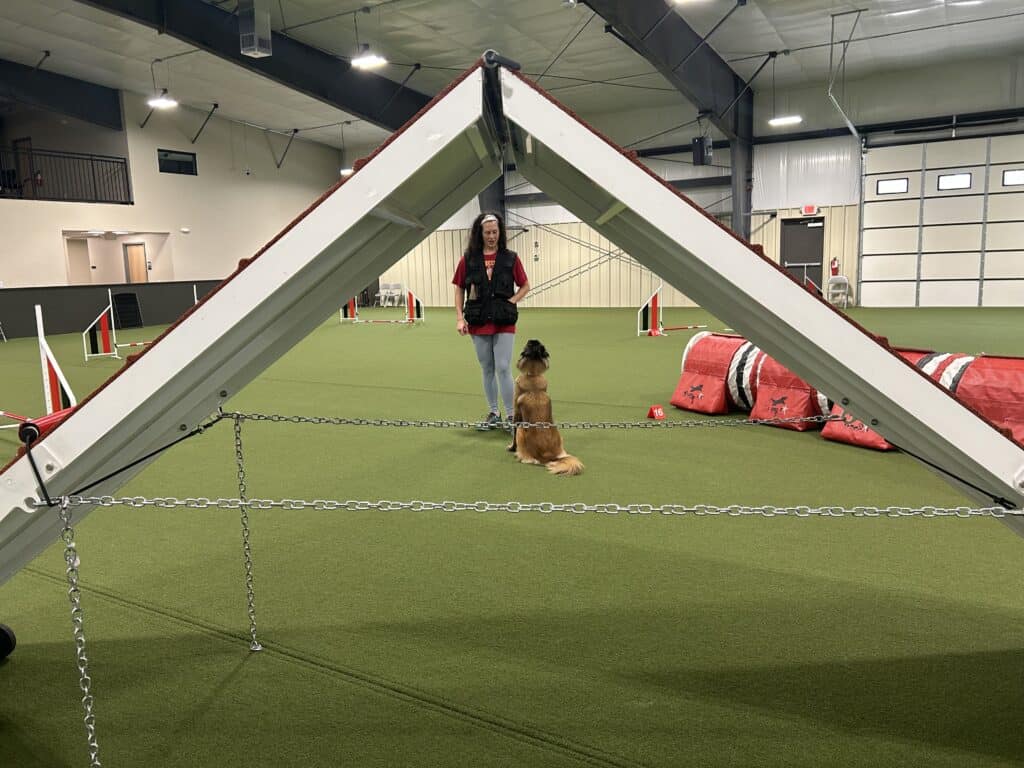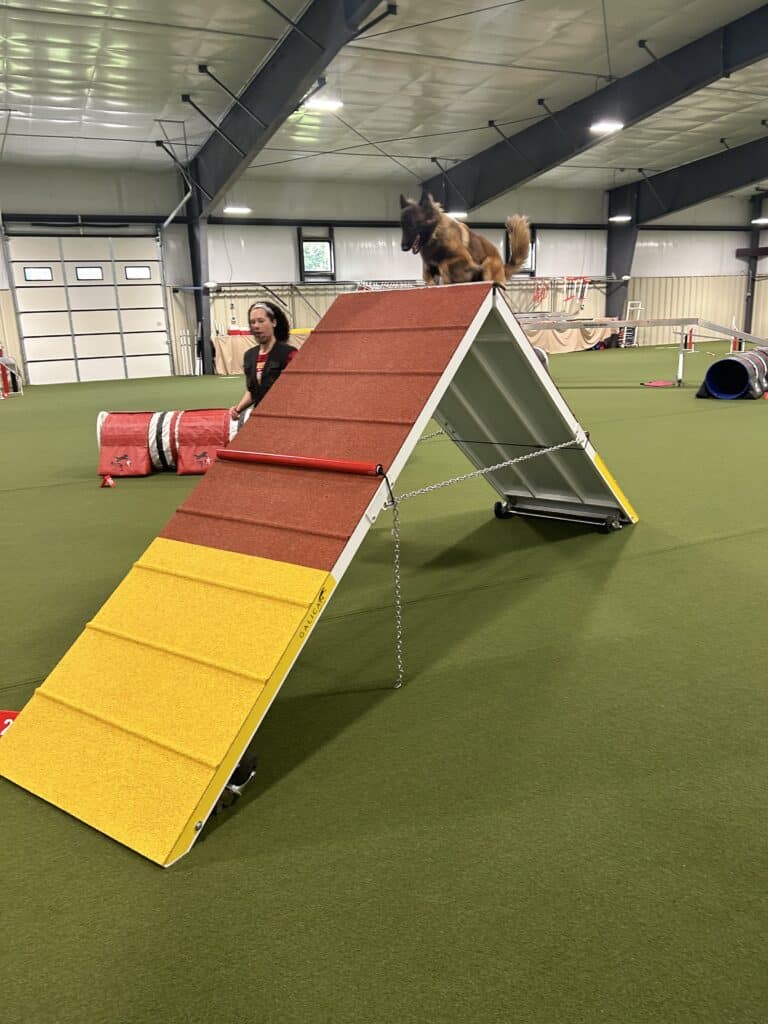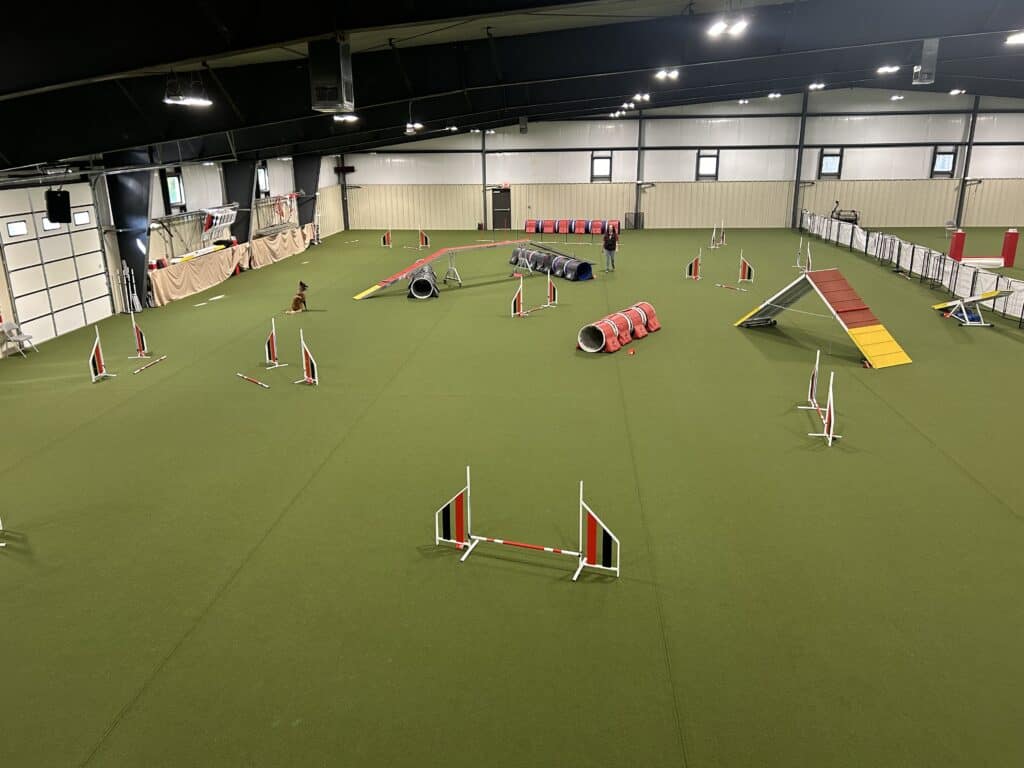If you’re looking for an outlet for your high-energy, high-drive dog, the sport of dog agility could be the perfect fit. Agility is exciting for participants and spectators alike, as dogs compete to navigate a series of obstacles in the fastest time – and with the fewest errors – possible. Whether you’re looking for a new activity to do with your pup, or intent on competing in an agility competition, this sport can be a great way to teach your dog new skills and build a strong handler-dog bond.
However, before you set up the jumps, tunnels and weave poles, there are a few considerations when assessing if your dog is actually a good candidate for agility. While agility is a sport that is accessible for most dogs, there are some exceptions because of health and fitness issues. If you want to select a puppy specifically to compete in agility, the bar is even higher (no pun intended).
In this article, we’ll outline some of the key traits and characteristics of a successful agility dog.
1) Physical health
Agility is one dog sport where significant physical health problems can prevent a dog from taking part. Any dog who has suffered injuries or fractures to a leg, paw or joint should likely avoid agility activities. Many of the jumps, twists and turns involved in agility can put pressure on a dog’s body. Older dogs may also be unsuited for the rigorous demands of the agility course. If your dog has suffered injuries in the past, a gentler activity like scent work may be a more appropriate choice. If in doubt, consult with your veterinarian.
2) Fitness and stamina
It goes without saying that agility is a physically demanding dog sport. Speed is of the essence, as competitions are a race against the clock to complete the course in the fastest time. Dogs need to be in great shape to excel in agility. Overweight or malnourished dogs may be able to navigate the course, but will not be efficient at doing so, and also run the risk of causing injury to themselves.
3) Energy and drive
Successful agility dogs have boundless energy and copious amounts of drive. This makes it easier for their handler to motivate them to complete the course in the fastest time possible. Trying to work with a low-energy dog on agility equipment is hard work. If you’re selecting a puppy specifically to participate in agility, it is essential that you discuss your need for a high-energy dog with breeders.

4) Good handler focus
Agility isn’t just about the dog. While they are the ones that must complete the course, they have to take instruction from their handler through directions and hand signals. The dog therefore needs to be able to focus on their handler and block out all distractions, whether those arise from loud noises, other dogs or spectators.
5) Trainability
A good agility dog must be adaptable and able to learn new behaviors. The sport of agility isn’t as simple as letting your dog loose on the course. Instead, they must be taught how to navigate through the obstacles in the swiftest manner possible, often a significant distance away from their handler. This includes following handler instructions and ensuring that the rules of the sport (ex: ensuring that contact points on equipment are hit) are adhered to. The trainability of the dog will influence how quickly they will pick up on these cues.
6) Temperament and work ethic
Work ethic – in other words, the desire to complete the tasks in front of them – is important for agility dogs. A motivated dog – perhaps from a breed with a heritage of performing physically demanding work – has an immediate advantage over other, less motivated dogs. Once again, this is a conversation to have with a breeder if you are looking to acquire a puppy for agility work.

Which breeds make good agility dogs?
You may be surprised at the range of breeds that are suited for agility. Agility competitions take place across different height divisions, opening up opportunities for dogs regardless of their size. In 2024, national AKC champion breeds included a Pembroke Welsh Corgi, an All-American Dog, two Border Collies, and a Weimaraner.
Other breeds who may be suited to agility include:
- Labrador Retrievers
- Golden Retrievers
- Australian Shepherds
- Papillons
- Shetland Sheepdogs
- Belgian Shepherds
- Rat Terriers
Agility is also open to mixed-breed dogs.
Which breeds do not make good agility dogs?
There are a handful of breeds who are not great candidates for agility. This may be due to their size, temperament, trainability, or other physical characteristics. For example, a Great Dane may simply be too large to safely navigate the course. Other dogs, like Pugs or Bulldogs, have a brachycephalic structure (a short, flat face), which can make it difficult for them to breathe easily when taking part in physically strenuous activities like agility.
When should you start training an agility dog?
You can begin working on foundational obedience and environmental stability as soon as you acquire a puppy – this will have benefits outside of agility training. Once the puppy hits six months, you could start to work on low-intensity tasks like directionals and ‘flat work’ like walking through tunnels, following handler cues at a distance, etc. – but it is vital not to incorporate any training that could impact their joint health or development. For obstacles and jumps, these should not be worked on until the dog is at least 12-18 months old. Consult with your veterinarian to ensure your dog is physically ready to begin agility training.
In conclusion
Agility can be an exciting and challenging activity for you and your dog! Whether you’re simply doing it to give your high-energy dog some enrichment and physical exercise, or you have aspirations to compete in a trial one day, there are numerous benefits to taking part in this high-octane dog sport. Following the tips outlined in this article can help to ensure that your pup is a good candidate for agility.

